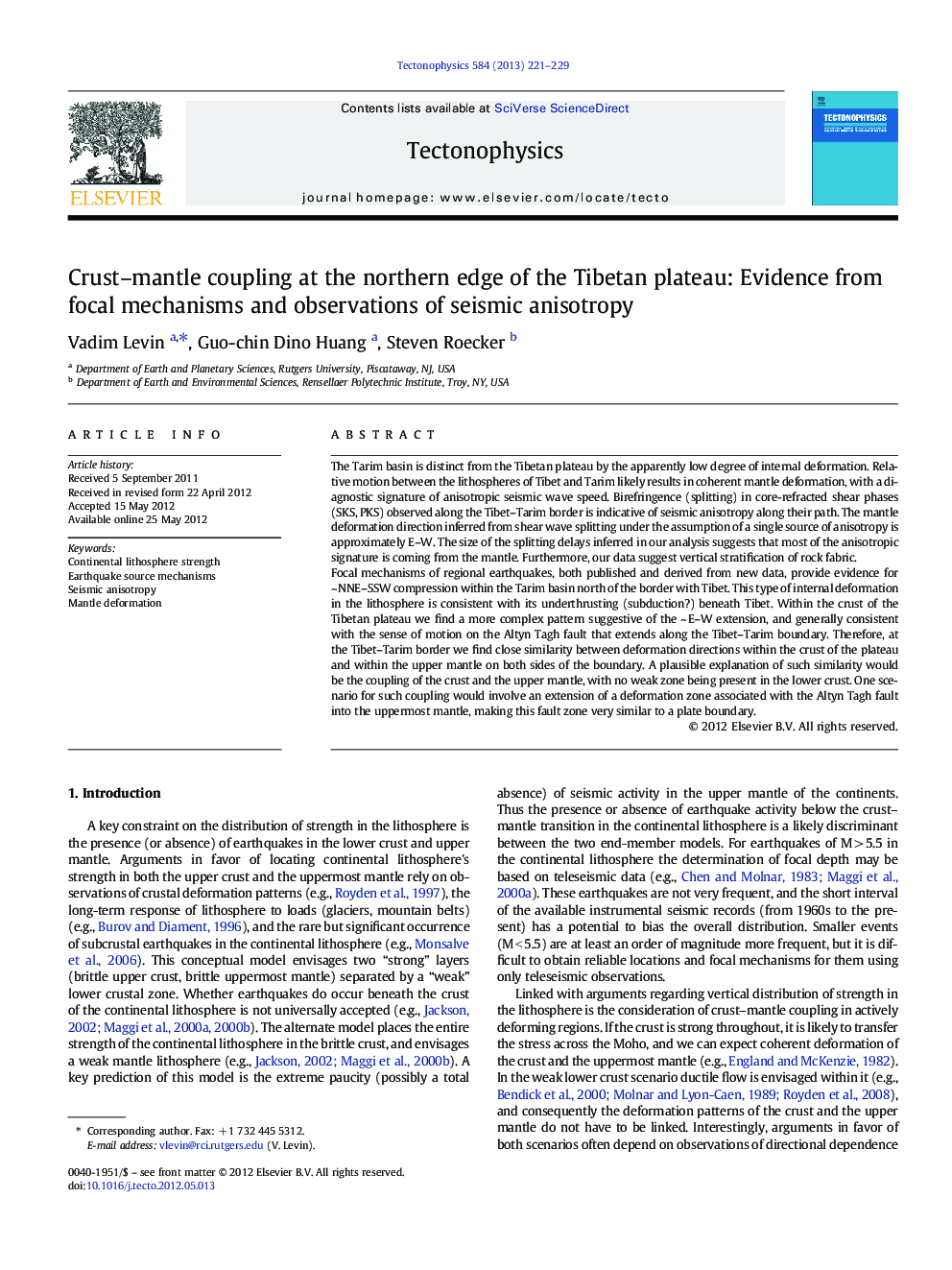| کد مقاله | کد نشریه | سال انتشار | مقاله انگلیسی | نسخه تمام متن |
|---|---|---|---|---|
| 4692449 | 1636801 | 2013 | 9 صفحه PDF | دانلود رایگان |
The Tarim basin is distinct from the Tibetan plateau by the apparently low degree of internal deformation. Relative motion between the lithospheres of Tibet and Tarim likely results in coherent mantle deformation, with a diagnostic signature of anisotropic seismic wave speed. Birefringence (splitting) in core-refracted shear phases (SKS, PKS) observed along the Tibet–Tarim border is indicative of seismic anisotropy along their path. The mantle deformation direction inferred from shear wave splitting under the assumption of a single source of anisotropy is approximately E–W. The size of the splitting delays inferred in our analysis suggests that most of the anisotropic signature is coming from the mantle. Furthermore, our data suggest vertical stratification of rock fabric.Focal mechanisms of regional earthquakes, both published and derived from new data, provide evidence for ~ NNE–SSW compression within the Tarim basin north of the border with Tibet. This type of internal deformation in the lithosphere is consistent with its underthrusting (subduction?) beneath Tibet. Within the crust of the Tibetan plateau we find a more complex pattern suggestive of the ~ E–W extension, and generally consistent with the sense of motion on the Altyn Tagh fault that extends along the Tibet–Tarim boundary. Therefore, at the Tibet–Tarim border we find close similarity between deformation directions within the crust of the plateau and within the upper mantle on both sides of the boundary. A plausible explanation of such similarity would be the coupling of the crust and the upper mantle, with no weak zone being present in the lower crust. One scenario for such coupling would involve an extension of a deformation zone associated with the Altyn Tagh fault into the uppermost mantle, making this fault zone very similar to a plate boundary.
► Earthquakes along Tibet–Tarim border distribute throughout the crust.
► Focal mechanisms suggest E–W extension in the crust of the Tibetan plateau.
► Shear-wave splitting in core-refracted phases shows ~ E–W fast polarization.
► Thus crustal stress and mantle strain are aligned, and crust–mantle coupling is likely.
Journal: Tectonophysics - Volume 584, 22 January 2013, Pages 221–229
